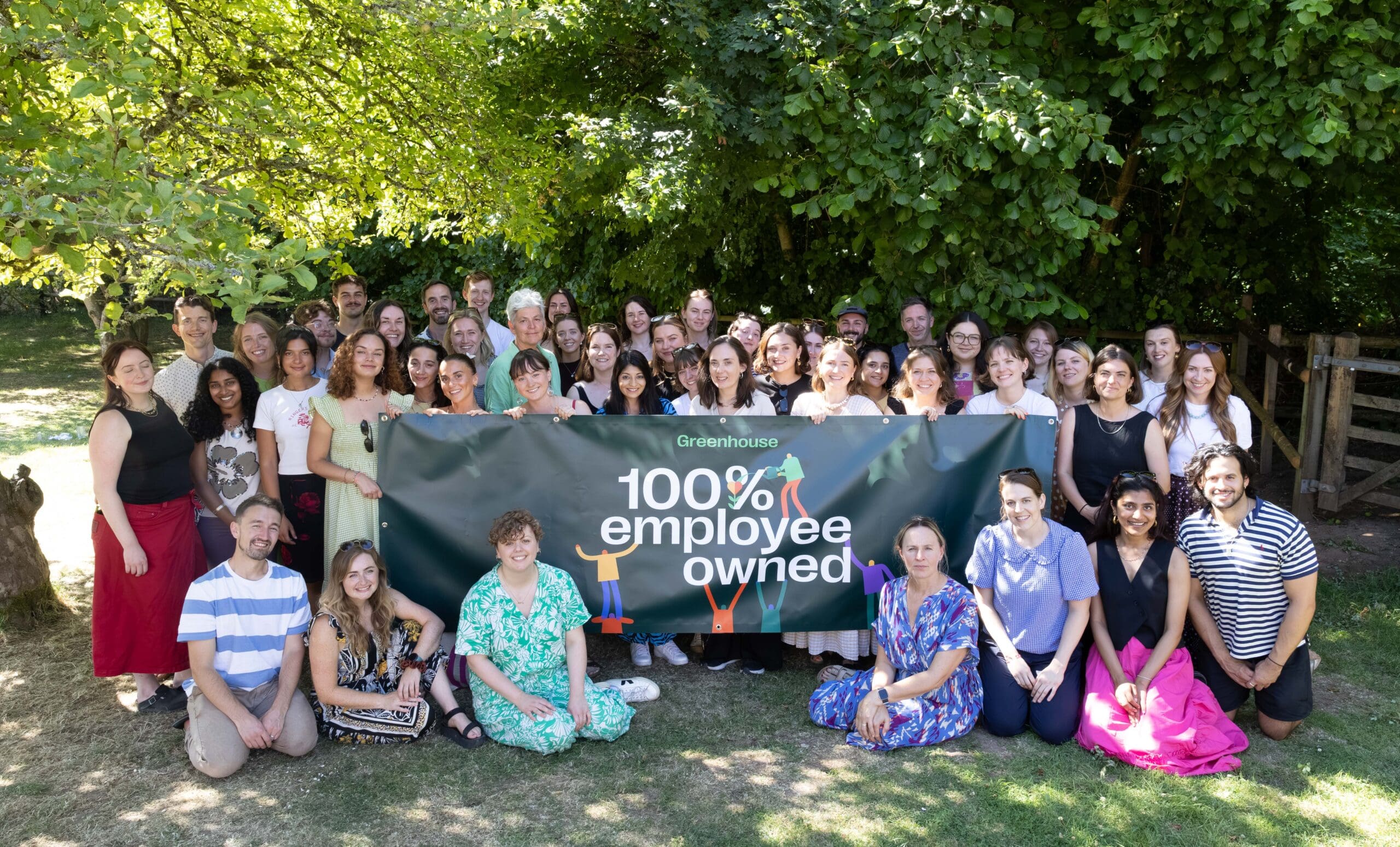Committing to climate action: science-based targets

As a communications agency working with multiple organisations who are focused on accelerating the low carbon transition, we talk a lot about ‘net-zero’. It’s part of our day-to-day vocabulary. And as a purpose-driven, B Corp certified organisation, it’s imperative that we practise what we preach – meaning net-zero needs to be part of our day-to-day action too. That’s why we’re proud to announce the targets we have set to reach net-zero, validated by the SBTi (Science Based Targets initiative).
Who is the SBTi and what are science-based targets?
The SBTi is a global body that enables businesses to set ambitious emissions reduction targets in line with the latest climate science. The targets provide a clearly-defined pathway for companies to reduce greenhouse gas (GHG) emissions in accordance with the goals of the Paris Agreement – namely to keep warming beneath 1.5 degrees Celsius.
With the SBTi’s guidance, Greenhouse Communications has committed to near- and long-term company-wide emissions reductions in line with science-based net-zero.
Why science-based targets?
The findings of the latest report from the Intergovernmental Panel on Climate Change (IPCC) were described by the UN as ‘code red for humanity’. The report argued that is still possible to limit global temperature rise to 1.5 degrees Celsius – but we are dangerously close to missing this target. It’s never been more urgent for everyone from governments to businesses to civil society to take action to reduce emissions.
How are science-based targets different to net zero targets?
While both net-zero targets and science-based targets are part of the broader effort to combat climate change, they address different aspects of emissions reduction, with science-based targets providing a more specific and science-aligned approach to setting emissions reduction goals.
The path to achieving net-zero emissions is inconsistent across industries. ‘Net-zero’ is a broader concept that encompasses achieving a balance between emissions and removals (using carbon offsetting), while science-based targets specifically focus on actual emissions reductions. Solely relying on carbon offsetting is problematic in the long term as it allows a business to continue emitting at a sustained rate, without taking action to reduce emissions across all elements of business operations.
Science-based targets provide industry-specific guidance – including net-zero communications agencies – and there are stringent frameworks in place to ensure businesses like ours set targets that are aligned with avoiding exceeding 1.5 degrees of global heating. IPCC modelling has calculated a total remaining carbon budget if we are to limit warming. Each industry has its own specific remaining carbon budget, and to stay within that budget, every business within the sector will need to reduce their emissions accordingly, and as fast as possible.
What science-based targets has Greenhouse Communications set?
Greenhouse has set the following targets:
- To reduce scope 1 and 2 emissions by 42% on a 2022 base year by 2030
- To be science-based net-zero by 2045
- To reduce our absolute scope 1, 2 and 3 emissions by 90% on a 2022 base year by 2045.
- Direct emissions reductions (decarbonisation) will be prioritised and all residual emissions will be neutralised in line with the SBTi criteria before reaching net-zero emissions.
How will we get there?
To help us reduce our emissions and meet our net-zero targets, we’re committed to:
- Engaging >60% of our suppliers to ask for their commitment to emissions reduction.
- Incentivising our employees to lower their environmental impact by offering benefits including credit to change to a more sustainable mobile phone network, additional paid holiday for slow travel, an ethical pension scheme, an electric vehicle leasing scheme, and cycle to work initiative.
- Removing the use of natural gas from our office sites and improving efficiency of our electricity, through measures such as installing LED lights.
- Improving the recycling facilities at our office sites.
- Introducing a complete ban on domestic flights in favour of slow travel options for all European travel wherever possible.
- Buying refurbished IT hardware wherever possible.
- Set up a “green team” who will drive our initiatives forward to become a net-zero communications agency.
We are committed to reporting annually on our emissions and evidencing reductions in line with our agreed trajectory. By putting Science Based Targets in place that are verified by the SBTi, we are proud to demonstrate climate leadership as an SBTi communications agency. The commitments also take us a step closer to becoming a regenerative business, creating net positive impact for the environment, our communities, and society as a whole.


